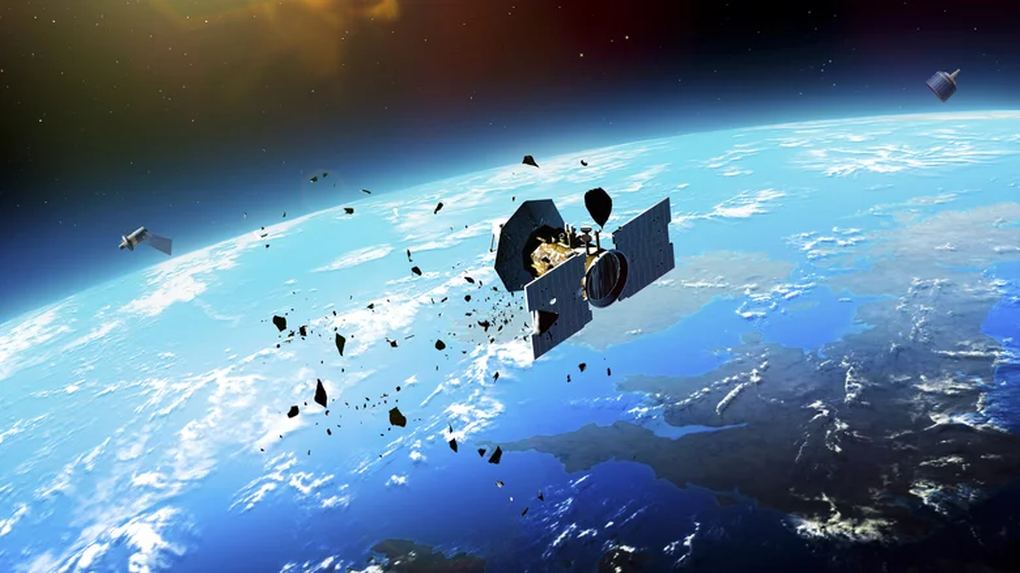Outer space is facing a serious "garbage crisis" and the situation is getting worse.
Space debris increases, what dangers do astronauts face?
Large pieces of debris, along with hundreds of thousands of smaller pieces floating in orbit, increase the risk of collisions at extremely high speeds.
Recently, a piece of space debris collided with the Shenzhou 21 spacecraft while in orbit, cracking the observation window glass.
This prevented three Chinese astronauts from landing on Earth, forcing them to temporarily stay on the space station until a safe vehicle could return.

Shenzhou 21 crew members are trapped on the space station (Photo: Xinhua).
In 2021, debris hit the International Space Station (ISS), damaging part of its robotic arm. Over the past few years, the ISS has had to adjust its orbit several times to avoid flying debris.
Space debris not only threatens spacecraft and expeditions, but also endangers satellites serving important missions on the ground.
Normally, space junk is left to continue orbiting Earth for years, then gradually falls into the atmosphere, hopefully burning up.
Fall time depends on altitude, objects above 965km from the atmospheric re-entry threshold can continue to hover for centuries.
The amount of debris is so dense that every low-orbit flight must calculate the probability of collision.
Safe solution to "clean up" space junk
A researcher at Tohoku University (Japan) believes the solution may lie in a plasma propulsion system.
Under the proposal, a dedicated satellite could use a plasma engine to “tug” at the pieces of debris, slowing them down and causing them to fall out of orbit more quickly.

Kazunori Takahashi, the scientist who proposed this solution, believes that plasma propulsion is the answer (Photo: Getty Images).
The impact force causes the debris to slow down, falling out of orbit more quickly. Instead of taking years or centuries, this process can be shortened to just a few minutes.
However, when creating impact force on the trash, the satellite will also be pushed back according to the jet principle.
This reduces the efficiency of the satellite. So scientists have developed a "bidirectional plasma" engine, which shoots plasma in two directions to cancel out the back thrust.
This is a contactless solution, while most other trash disposal options require direct contact, increasing the risk of collision.
The system was tested in vacuum tubes simulating space conditions and the results showed that the design worked effectively, even reducing de-orbit times.
While the technology is not yet ready for practical use, the successful test shows that researchers have taken an important step toward developing a propulsion system that can safely and efficiently remove space debris.
